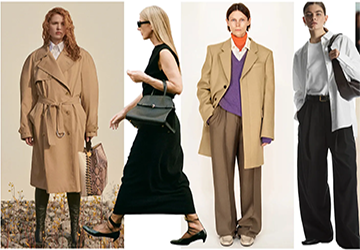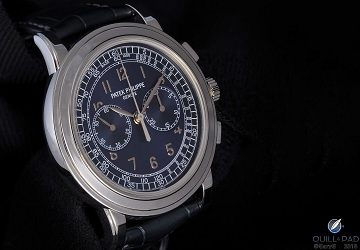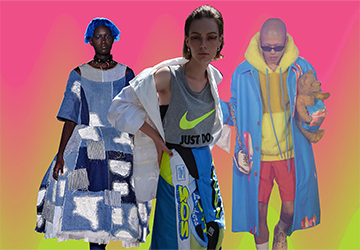First impressions matter in both professional and personal settings. The way you dress plays a vital role in how others perceive you.
Success is not just about wearing nice clothes. This includes knowing your background, dressing appropriately, and projecting confidence.
Building a professional wardrobe that reflects your success and professionalism can be daunting. The challenge is choosing the right pieces, coordinating outfits, and staying on budget.
This blog post covers eight critical elements of building a professional wardrobe. Let's dig in to find out more!

Master the 8 Key Elements of Professional Dressing
In workwear, dressing for success means more than just wearing a suit or a lovely dress. It requires a strategic approach and an understanding of the critical elements of a successful wardrobe.
Mastering these eight essentials of professional attire will help you exude confidence, make a lasting impression, and take your career to the next level.
1. Choose pants instead of jeans.
Wearing jeans in a professional setting can look casual and unprofessional. It can damage your credibility and make it harder for others to take you seriously.
Choosing pants is a better choice. Pants look more elegant and refined, showing professionalism and attention to detail.
Find pants that fit your body well and make you feel secure.
Combine them with a matching top and accessories for an elegant, businesslike look.
2. Make sure your clothes fit
Wearing clothes that don't fit well can make you look sloppy and unprofessional. It can also affect your confidence and ability to make a positive impression.
Prioritize clothing that fits you. Well-fitting clothes can enhance your appearance and make you look elegant and well-groomed.
Pay attention to sizing, try different options, and consider tailoring your clothing for the perfect fit.
Wearing well-fitting clothing can boost confidence and help you project a professional appearance.
3. Change clothes regularly
Wearing the same outfit for days can make you look unprepared and need more attention to detail.
It may give the impression that you need to be more proactive with your professional image.
Make a conscious effort to change your clothes regularly. This will add variety to your wardrobe and show that you put thought and effort into your appearance.
Plan your outfits, combine different pieces, and try new combinations to create new looks daily.
This practice demonstrates your commitment to professionalism and personal style.
4. Consider color coordination
Poor color matching in clothing can result in an unattractive look. It may give the impression of a lack of attention to detail and neglect of aesthetics.
Take your time to pay attention to color coordination when choosing clothes. Choose colors that complement and suit your skin tone.
Experiment with different combinations to find what works best for you.
Also, consider the suitability of the color for the occasion or setting. A well-thought-out color scheme can enhance your overall image and help create an elegant and professional appearance.

5. Watch your shoes
Refrain from neglecting shoes can undo all the hard work you put into your outfit. Wearing worn-out or mismatched shoes can create a negative impression and detract from a professional appearance.
Take due care with your choice of shoes, and make sure they match the formal style of the occasion. Invest in clean, polished shoes to complement your outfit.
Consider shoe style, color, and comfort for a consistent and professional look from head to toe.
Taking good care of your shoes can enhance your overall look and convey professionalism.
6. Dress Smart Casual
Knowing how to dress well to create an elegant off-duty look can be challenging. Balancing comfort and professionalism while maintaining the right level of formality can be confusing.
Choose neat and well-fitting clothes, and choose your leisure time wisely. Choose less formal attire than traditional business attire but maintain a sophisticated and professional feel. Mix and match tailored pieces with innovative accessories to find the right balance.
Knowing the nuances of smart casual attire will allow you to dress appropriately for various professional occasions and showcase your style and versatility.
7. Compliance with business procedures
Following a formal business dress code can be challenging, especially when choosing the proper attire for a formal event or important meeting. It requires a clear understanding of expectations and standards.
To comply with the official company dress code:
Choose a tailored suit or formal attire that conveys professionalism and respect.
Choose classic styles with conservative cuts and high-quality fabrics.
Pay attention to proper fit, proper accessories, and proper care.
Use neutral or dark colors for an elegant and timeless look.
You can project a professional appearance and demonstrate your commitment to success by following formal business attire guidelines.
8. Demonstrate business professionalism
It can be challenging to embody the highest level of formality in what is known as a business person's professional attire. It requires attention to detail and an understanding of traditional business norms.
You demonstrate your commitment to professionalism and success by embodying a professional business image.
Opt for a suit or dress that is conservative and impeccably tailored. Choose from quality fabrics and classic styles. Pay attention to your grooming and ensure your accessories are neat and appropriate.
Mastering the business dress code will help you stand out professionally and make a lasting impression.
Diploma
Building a professional wardrobe is more than just clothing; it's a powerful tool that communicates your professionalism and attention to detail.
Adopting the principles outlined in this article allows you to present yourself effectively in various professional settings.
Remember, your attire should reflect your style and commitment to your career.
Embark on this journey with confidence and style!







